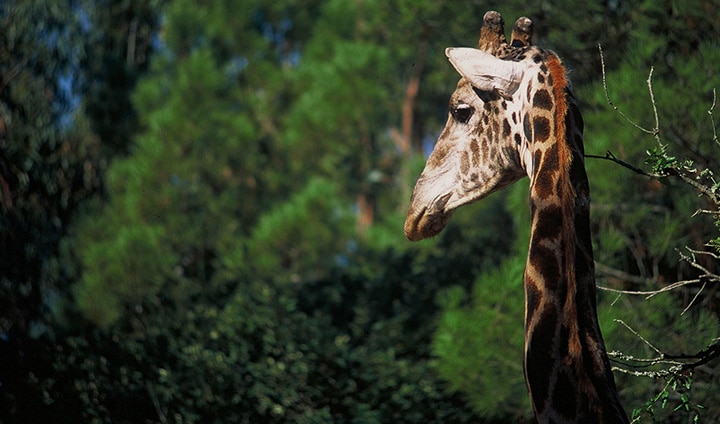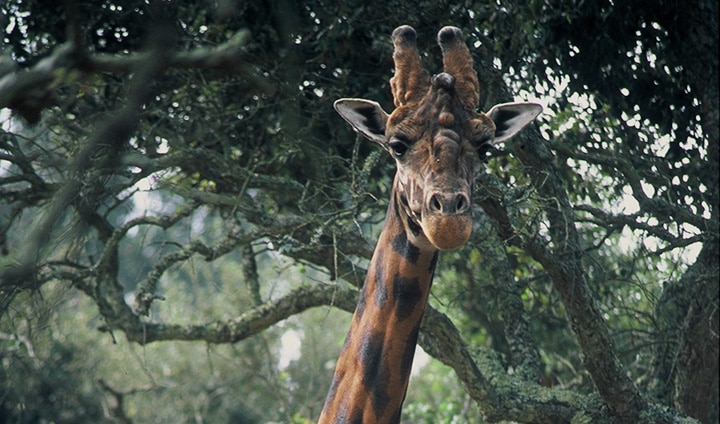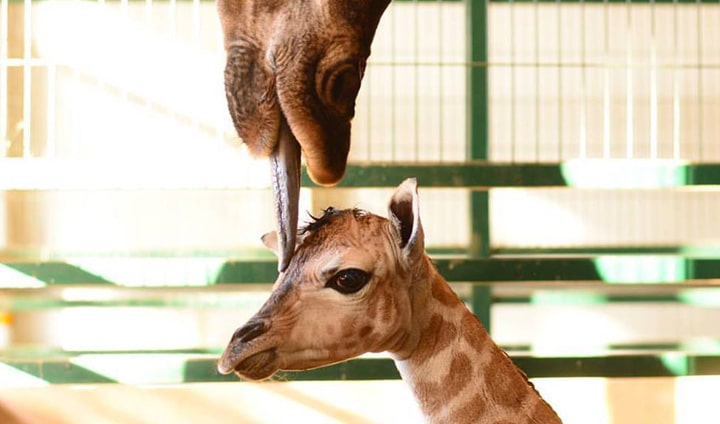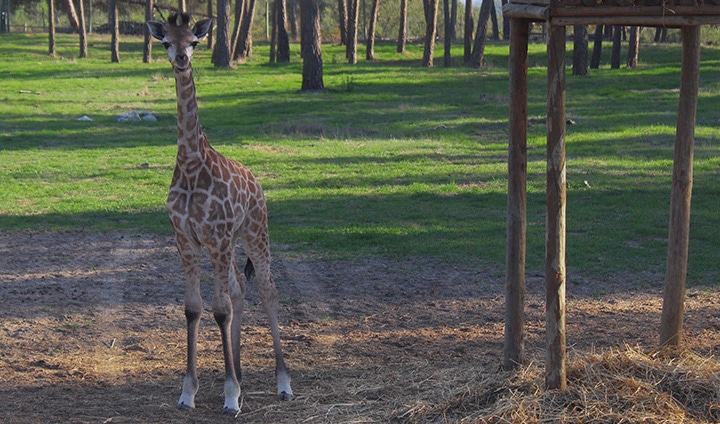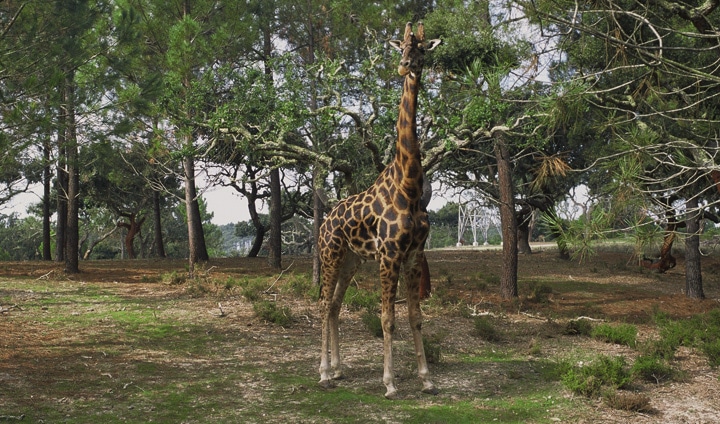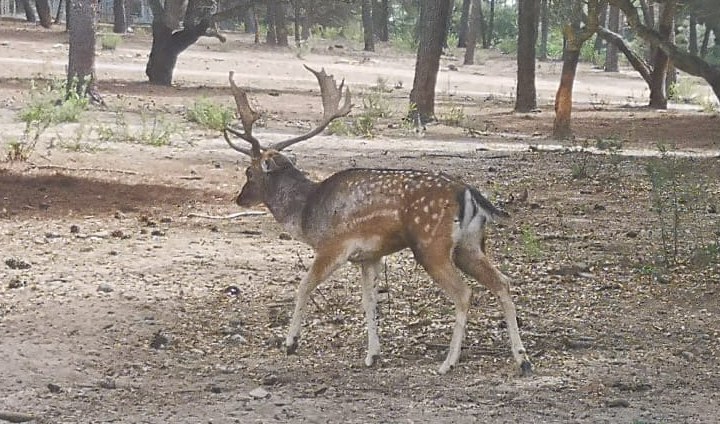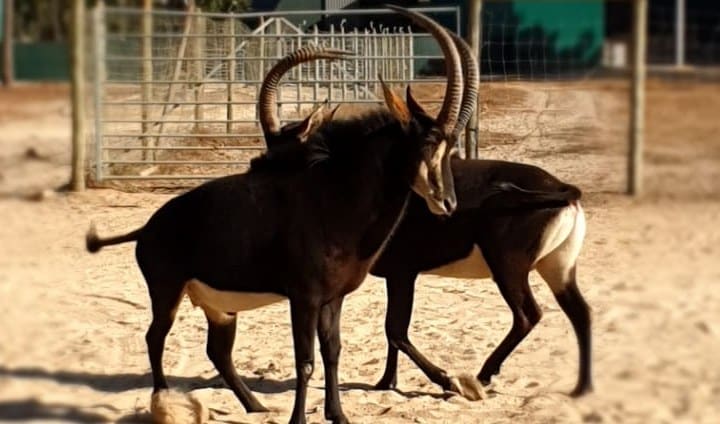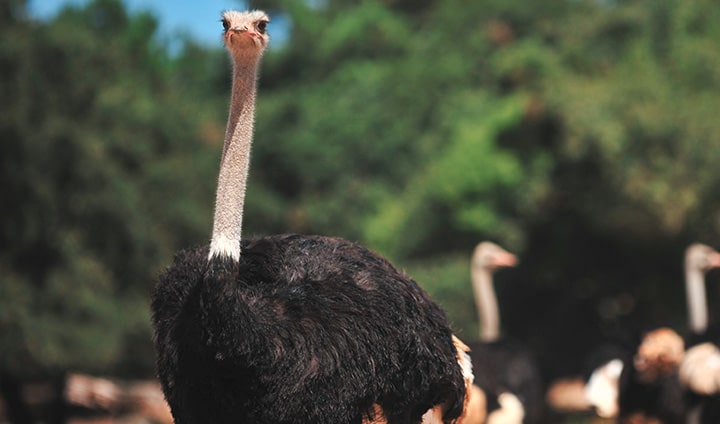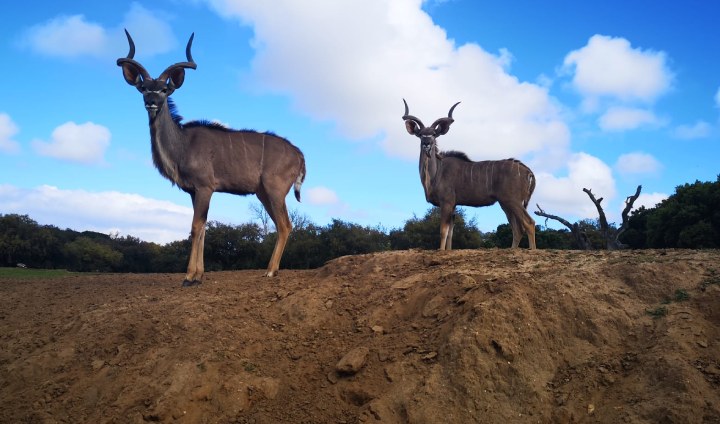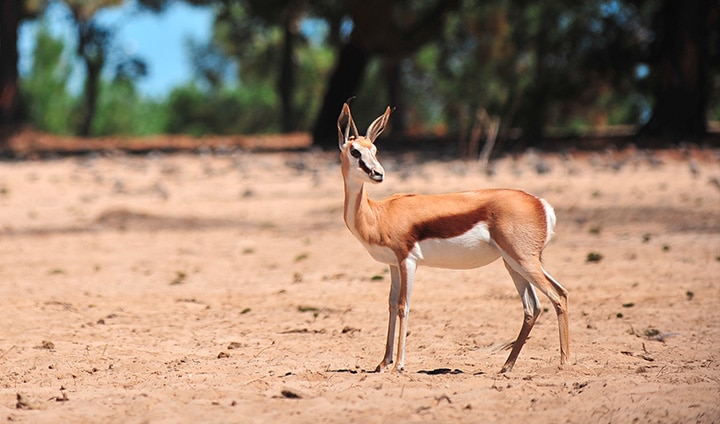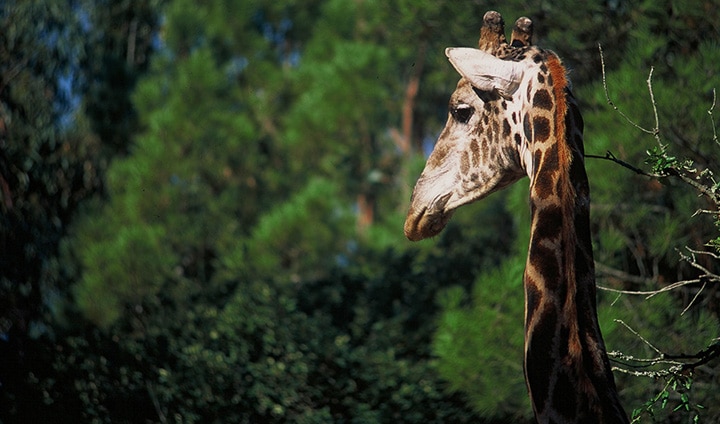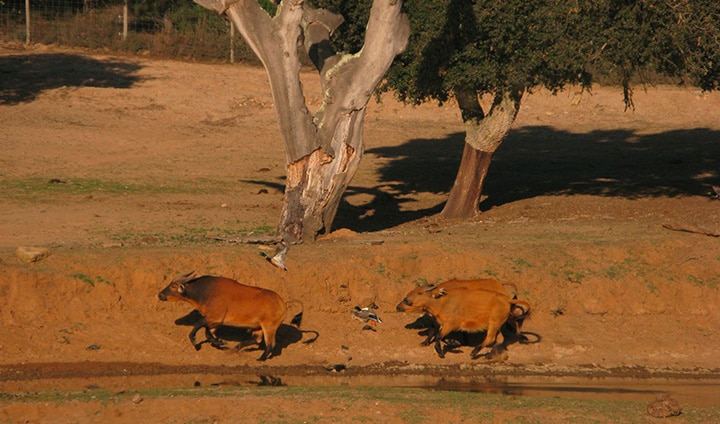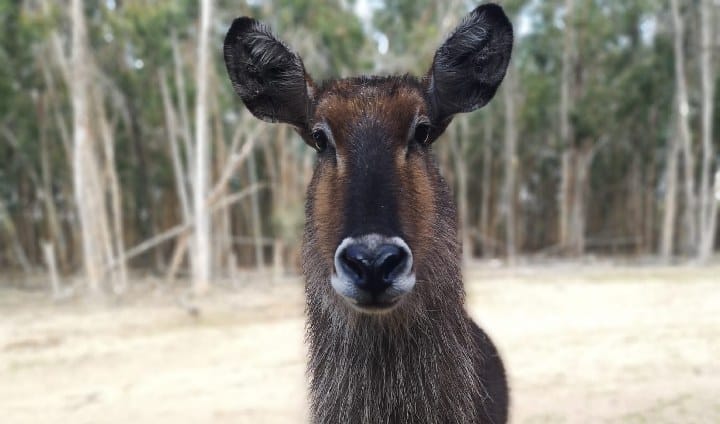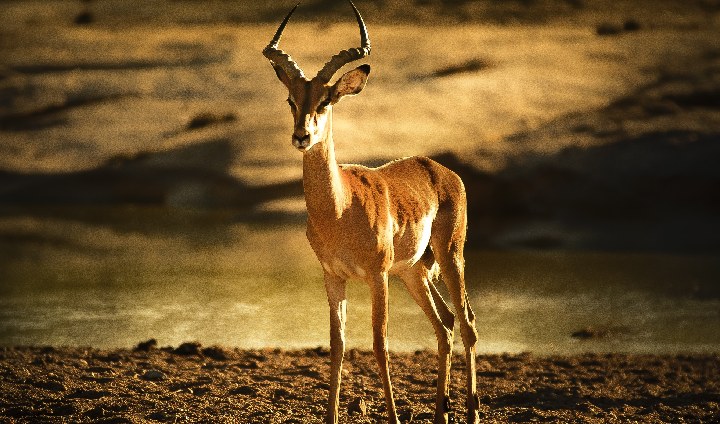Distribution and Habitat: The geographical distribution of this species extends from southern Sahara to northern Botswana. Giraffes prefer arid and dry areas. They are found in savannas, pastures or open woods. As these animals only drink water occasionally they are often found very far from points of water.
Diet: Giraffes feed on leaves, flowers, leaf sprouts and fruits. In areas where there is a very saline soil, giraffes can ingest little bits of earth, in order to balance their minerals’ concentration. They are considered browsers, that is, they select carefully what they ingest; acacia tree leaves being their preferred food. They can eat about 66 kg of food per day.
Reproduction: They are typically polygamous animals. Usually, births occur between May and August. Pregnancy takes between 13 to 15 months and birth occurs with the mother standing or even in movement. The calf falls about two meters high, which is essential to start the whole organism functioning. After about 30 minutes, the calf stands. Calves are weaned between 12 and 16 months of age. Females become sexually mature at five years of age, males are at seven.
Behaviour: They are animals with social structure and live in of up to 20 individuals. Females tend to be more sociable than males. These herds can host individual animals; they can join and leave the group, according to their will. Resting time happens during the night, they maintain standing. Male dominance is imposed by extremely violent fights that only end when one of the giraffes falls or abandons the duel. When fleeing, giraffes can reach 60 km/h.
Conservation Status: Vulnerable (VU)
Class: Mammalia
Order: Artiodactyla
Family: Giraffidae
Dimensions: 4.5 m – 5.7 m height
Weight: 1200 kg – 2000 kg
Lifespan: 20 to 25 years in captivity and 10 to 15 years in the wild


